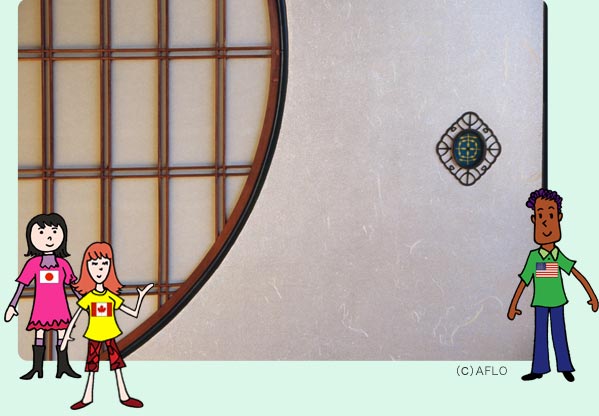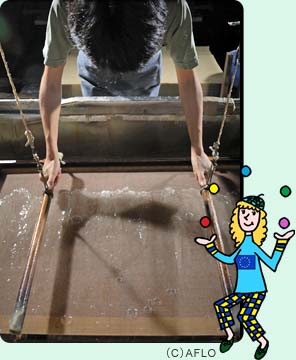
Do you know what the most eco-friendly paper in the world is? The answer is washi, handmade Japanese paper. Most paper is made out of wood pulp. To make this wood pulp, many trees are cut down, and thus it is said to be a cause of deforestation and other environmental problems. By contrast, washi uses only new branches that have grown that year, so trees do not have to be cut down.
Sturdy and Durable
While pulp is made by boiling wood chips in a chemical solution, Japanese papermaking is a labor-intensive process that uses no chemical substances; this is another reason why it is eco-friendly. The main raw materials for this paper are deciduous shrubs, primarily kozo (paper mulberry) and gampi (Diplomorpha sikokiana). The fibers are longer, stronger, and more durable than paper made from pulp. Washi is said to last for a thousand years.
The history of handmade Japanese paper goes back 1,200 years. Washi has been used for various household goods, from writing paper to paper screens and other fittings, and even umbrellas coated with wax. During the Meiji era (1868-1912) and the Taisho era (1913-1926), however, mass-produced paper replaced traditional paper, and washi fell into disuse.
In recent years, washi has been rediscovered as an eco-friendly paper made from natural materials, and so it is finding growing use in interior and other designs.

Washi Techniques in Brazil
Various places in Japan are known as papermaking centers, including one in Fukui Prefecture and one in Kochi Prefecture, and a number of master papermakers have been designated national living treasures.
Recently, efforts have been made to introduce some of Japan's outstanding papermaking techniques to other countries as a means of contributing to environmental preservation. In Brazil, for example, Amazonian paper is now being produced as part of a project launched by the Japan International Cooperation Agency to foster the growth of new industries and to stop deforestation. Under the project Japanese experts are dispatched to the Amazon basin to provide guidance for producing paper from indigenous plants using washi-making techniques.
In Japan, more and more elementary schools are organizing programs to introduce students to the washi papermaking process, and some workshops even offer papermaking classes for children. If you have the chance, why not try your hand at making washi?










